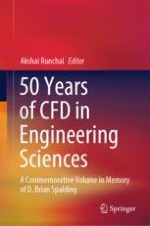2020 | OriginalPaper | Chapter
Some Observations on Thermodynamic Basis of Pressure Continuum Condition and Consequences of Its Violation in Discretised CFD
Author : A. W. Date
Published in: 50 Years of CFD in Engineering Sciences
Publisher: Springer Singapore
Activate our intelligent search to find suitable subject content or patents.
Select sections of text to find matching patents with Artificial Intelligence. powered by
Select sections of text to find additional relevant content using AI-assisted search. powered by
